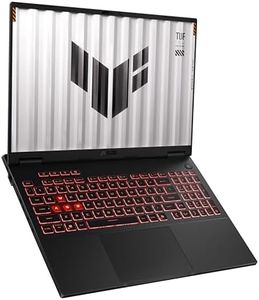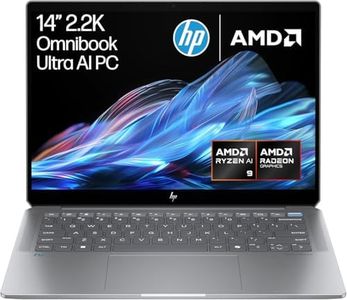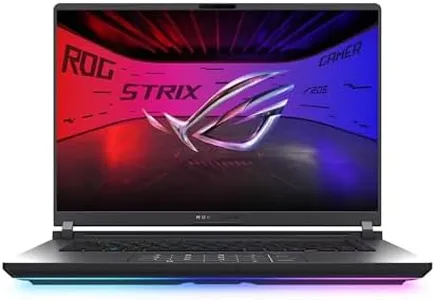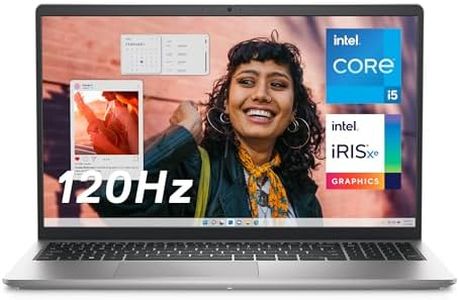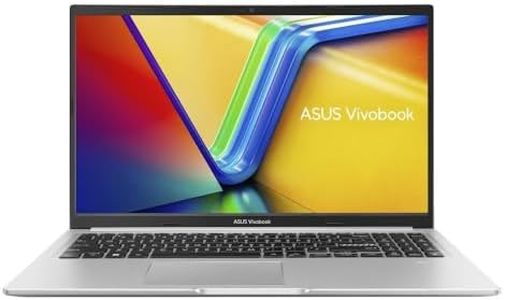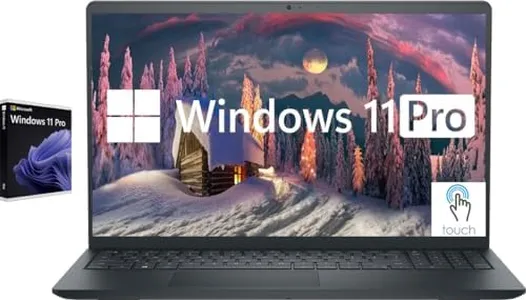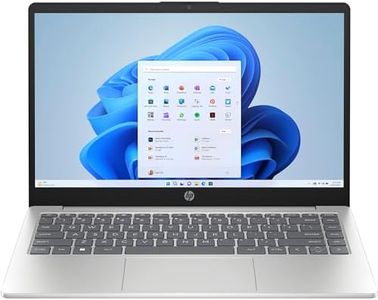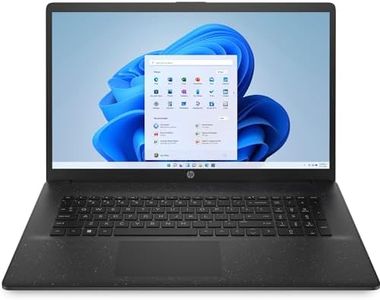We Use CookiesWe use cookies to enhance the security, performance,
functionality and for analytical and promotional activities. By continuing to browse this site you
are agreeing to our privacy policy
10 Best Laptop For Music Production
From leading brands and best sellers available on the web.By clicking on a link to a third party's website, log data is shared with that third party.
Buying Guide for the Best Laptop For Music Production
Choosing a laptop for music production involves looking beyond just performance—you want a device that supports your creative process without interruptions. Focus on factors that enhance workflow, audio quality, and software compatibility. Consider the software and hardware tools you plan to use and think about where and how you'll be working: in a studio, at home, or on the go. Balance your need for speed, storage, and portability, as each can affect comfort and productivity while making music.Processor (CPU)The processor, or CPU, is the engine of your laptop. In music production, a strong CPU allows you to run complex digital audio workstations (DAWs) and work with multiple tracks, effects, and plugins smoothly. CPUs are often grouped by number of cores and clock speed. Entry-level laptops may have dual-core processors, but quad-core or higher is ideal for music production since they handle multiple tasks at once. If you use intensive plugins or work with large projects, a six-core or higher CPU will help prevent lag and crashes. Choose based on the complexity of your music projects: heavier projects need more powerful CPUs.
Memory (RAM)RAM is where your laptop stores data it needs right away, affecting how many plugins, samples, and tracks you can use without slowing down. Most casual users get by with 8GB, but for music production, 16GB is recommended, especially for heavy sampling and multitasking. If you plan on using many virtual instruments, large sample libraries, or doing advanced work like orchestral arrangements, 32GB provides extra headroom. Choose RAM size based on your project size and how many applications you use simultaneously.
Storage (SSD vs HDD)The type and amount of storage in your laptop affects how fast your projects, samples, and programs load. Solid State Drives (SSD) are much faster than traditional Hard Disk Drives (HDD), allowing you to save and access large files quickly and run your operating system smoothly. For music production, an SSD is highly recommended, with 512GB as a comfortable minimum so you can store software, sessions, and sample libraries. If your work uses many big files, 1TB or more might be preferable. Always consider both speed and the space you need.
Audio ConnectivityMusic production often requires connecting microphones, instruments, and audio interfaces. Some laptops have better port selections, including USB-A, USB-C, or Thunderbolt, which are important for high-speed connections to audio interfaces and MIDI controllers. If you plan to use outboard gear or professional audio interfaces, make sure your laptop’s ports match your devices. The right connectivity can reduce latency and noise, influencing your recording quality and convenience.
Display Size and ResolutionA larger and higher-resolution screen lets you see more of your DAW—tracks, plugins, and timelines—at once, making arranging and mixing easier. Laptops offer displays from about 13 to 17 inches. If you work on the go, a 13- or 14-inch screen balances portability and comfort, while a 15- or 17-inch display is great for studio use and complex projects. High resolutions (like Full HD or higher) provide clearer visuals and more workspace. Choose the size and sharpness based on your need for mobility and how much visual information you manage while producing.
Battery LifeBattery life determines how long you can work away from a power outlet. For studio use this may not matter, but if you work in different locations or travel, aim for longer battery performance—at least 6-8 hours under normal loads. Keep in mind that music production heavily taxes your system, reducing battery runtime. Choose based on your expected work habits and mobility needs.
Build Quality and NoiseA well-built laptop with efficient cooling stays durable and quiet. Fans from low-quality or thin laptops can get noisy under load, which is distracting when recording audio. Look for laptops known for quiet operation, solid construction, and effective cooling solutions. If you record with sensitive microphones, quieter laptops or those with fan adjustments help avoid unwanted background noise. Choose based on your typical working environment and needs for silence during recording.
Operating System CompatibilityDifferent music software and plugins may only run on specific operating systems (Windows, macOS, or Linux). Make sure your laptop’s OS supports the DAW and plugins you plan to use. If your favorite software is Mac-only, choose accordingly; if you need maximum flexibility, check cross-platform compatibility. Let your preferred music tools guide your OS choice.
